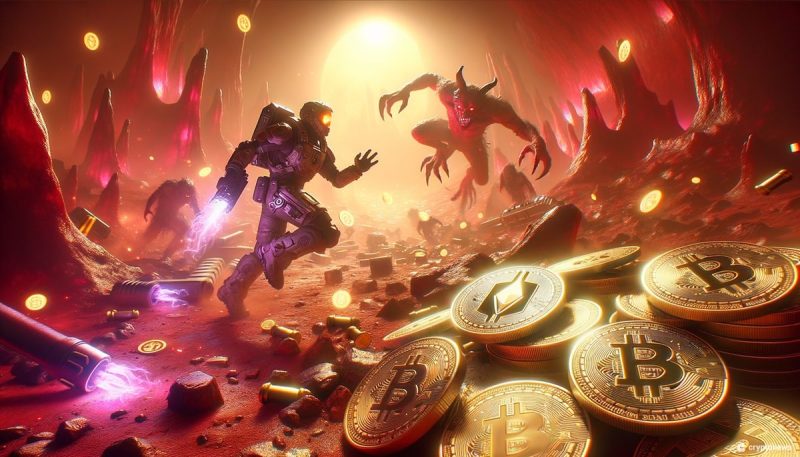
Doom’s Unconventional Journey: Now on Bitcoin, Dogecoin, and Gut Bacteria

The iconic first-person shooter game Doom has surpassed traditional platforms and made it onto blockchain networks like Bitcoin and Dogecoin.
Using protocols like Ordinals, enthusiasts have inscribed simplified versions of Doom on the Bitcoin (BTC) network.
Ordinals refer to a relatively recent innovation that allows for the inscription of additional data directly onto individual satoshis, the smallest unit of Bitcoin.
This concept has garnered attention for introducing a way to attach unique, non-fungible properties to specific satoshis, similar in spirit to NFTs on other blockchain platforms like Ethereum.
Furthermore, the recent integration of Doginals, a Dogecoin (DOGE) version of Ordinals, allows for the full version of Doom to be played directly through a web browser.
Ð is for Dogecoin!
Ð is for Doginals!
Ð is for DOOM on Dogecoin!
Now inscribed on Dogecoin blockchain forever!
Play it now on-chain: https://t.co/Xhfqyktva5 or click on the “content” link for full screen with mouse support and mobile support!
This game redefined… https://t.co/ysChvCSyrb pic.twitter.com/GWxZKQUfEe
— Mini Doge (@minidogeart) January 22, 2024
Doom Could Run Using E. Coli Bacteria
A recent student study from the Massachusetts Institute of Technology (MIT) suggests that Doom could even run using E. coli bacteria, aside from blockchain networks like Bitcoin and Dogecoin.
While this experiment may seem far-fetched, it highlights the boundless creativity and versatility surrounding the classic game.
Lauren “Ren” Ramlan, an MIT biotech graduate student researcher, proposed a concept where E. coli cells in a 32×48 well plate act as pixels, connected to a display controller.
The graphics of Doom are translated into signals that control the fluorescence of the cells, creating a visual representation of the game.
Although the gameplay experience might not be particularly enjoyable, it showcases the potential of merging genetic engineering with engaging entertainment.
What is Doom?
Doom, released in 1993, follows the story of a lone space marine battling demons in a research facility on Mars.
While the game’s file size remains small compared to modern standards, it revolutionized the gaming industry and spawned a successful franchise.
The unconventional gameplay and computational design of Doom have spurred a movement to play the game on a variety of unintended devices, such as ATMs, printers, calculators, Lego bricks, and even potatoes.
Here’s Doom running on a calculator powered by 100 pounds of moldy potatoes https://t.co/8PSiR2l54x pic.twitter.com/NKISmyDANY
— PC Gamer (@pcgamer) October 13, 2020
Ramlan’s experiment adds a unique twist to the ongoing trend of running Doom on unconventional platforms.
While neuronal computing has enabled Doom to be played through artificial neural networks, programming cells to play the game introduces a novel approach.
However, it’s important to note that running Doom solely on E. coli cells would be an incredibly time-consuming endeavor, potentially taking centuries to complete a single playthrough.
Ramlan encourages people to explore the possibilities of using cellular systems for gaming and display purposes, highlighting the diverse range of opportunities that synthetic biology offers.
“I definitely encourage people to imagine what they would play/display on a cellular system. The opportunities are as diverse as a computer screen… only with a much longer wait time.”
The post Doom’s Unconventional Journey: Now on Bitcoin, Dogecoin, and Gut Bacteria appeared first on Cryptonews.


